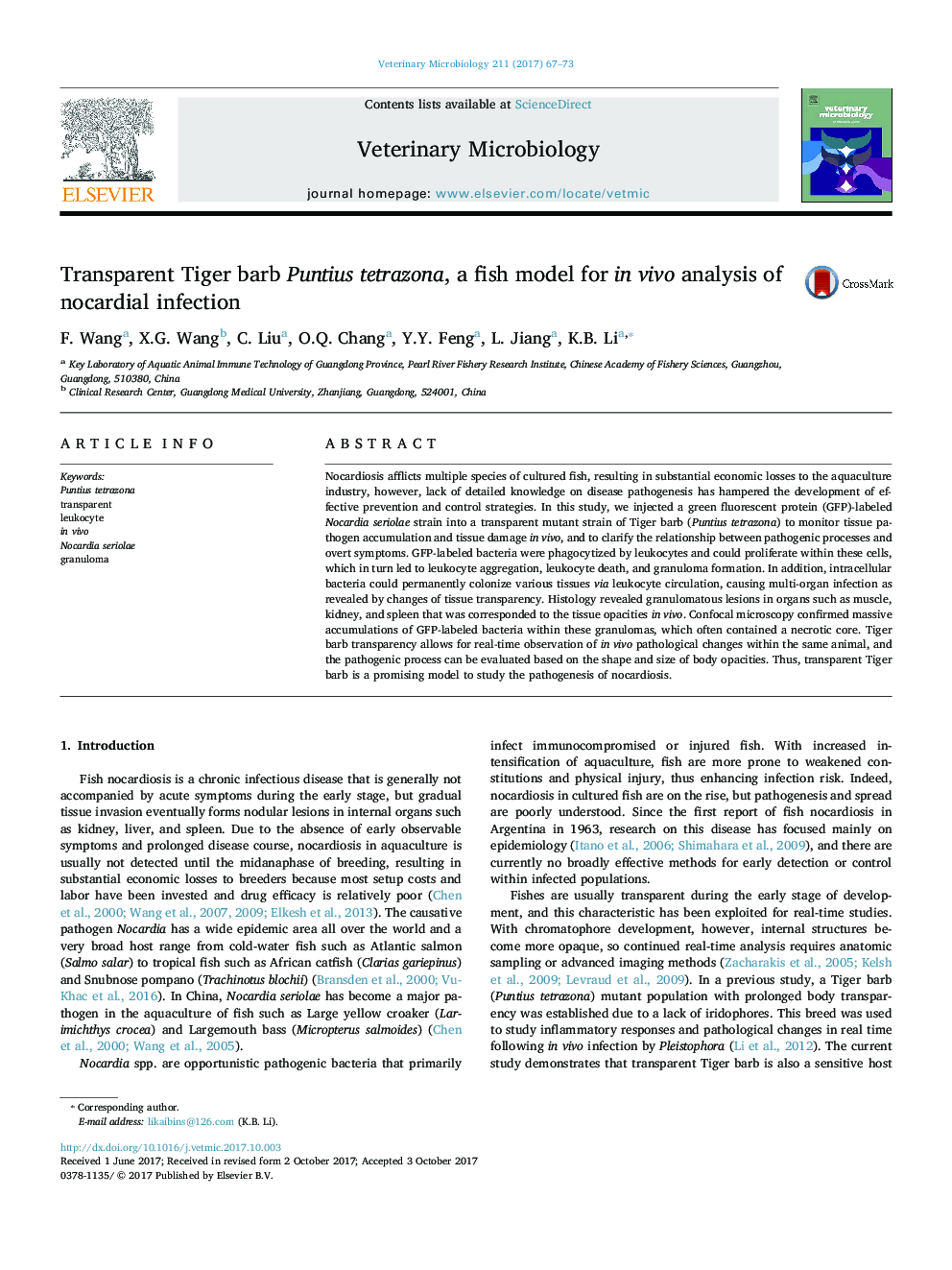| Article ID | Journal | Published Year | Pages | File Type |
|---|---|---|---|---|
| 5545059 | Veterinary Microbiology | 2017 | 7 Pages |
Abstract
Nocardiosis afflicts multiple species of cultured fish, resulting in substantial economic losses to the aquaculture industry, however, lack of detailed knowledge on disease pathogenesis has hampered the development of effective prevention and control strategies. In this study, we injected a green fluorescent protein (GFP)-labeled Nocardia seriolae strain into a transparent mutant strain of Tiger barb (Puntius tetrazona) to monitor tissue pathogen accumulation and tissue damage in vivo, and to clarify the relationship between pathogenic processes and overt symptoms. GFP-labeled bacteria were phagocytized by leukocytes and could proliferate within these cells, which in turn led to leukocyte aggregation, leukocyte death, and granuloma formation. In addition, intracellular bacteria could permanently colonize various tissues via leukocyte circulation, causing multi-organ infection as revealed by changes of tissue transparency. Histology revealed granulomatous lesions in organs such as muscle, kidney, and spleen that was corresponded to the tissue opacities in vivo. Confocal microscopy confirmed massive accumulations of GFP-labeled bacteria within these granulomas, which often contained a necrotic core. Tiger barb transparency allows for real-time observation of in vivo pathological changes within the same animal, and the pathogenic process can be evaluated based on the shape and size of body opacities. Thus, transparent Tiger barb is a promising model to study the pathogenesis of nocardiosis.
Related Topics
Life Sciences
Agricultural and Biological Sciences
Animal Science and Zoology
Authors
F. Wang, X.G. Wang, C. Liu, O.Q. Chang, Y.Y. Feng, L. Jiang, K.B. Li,
